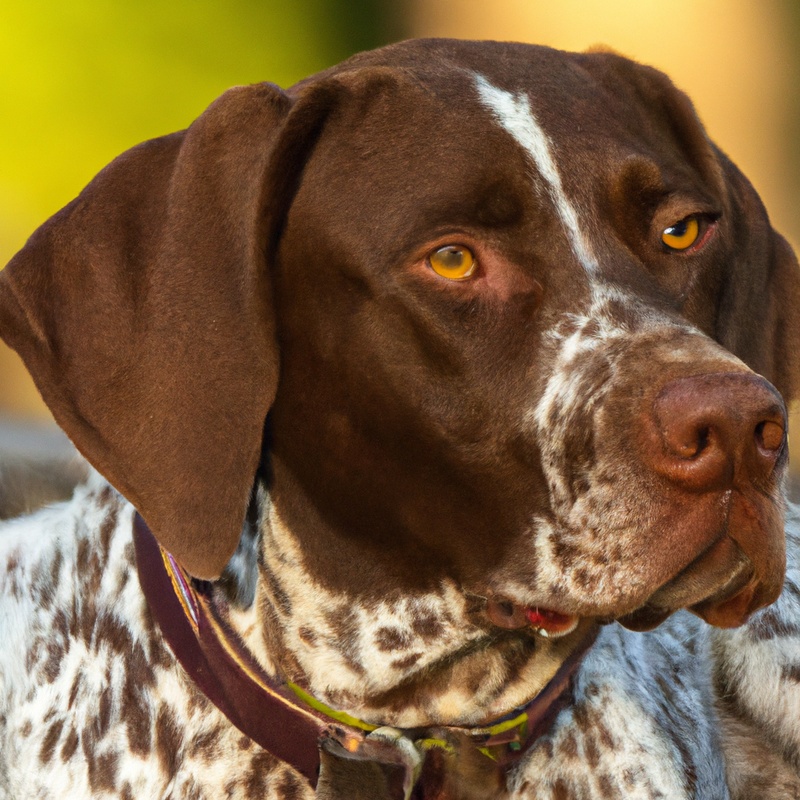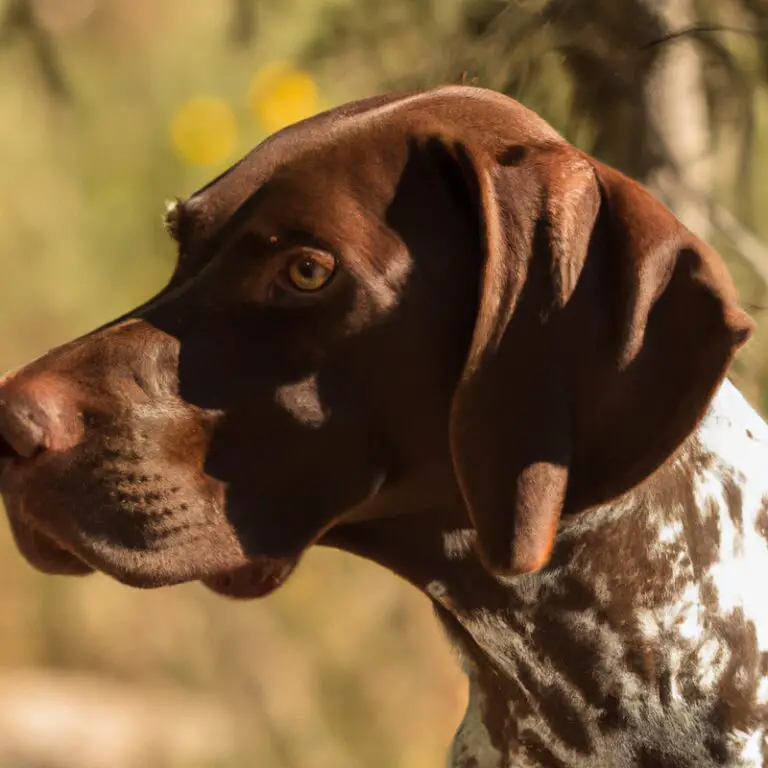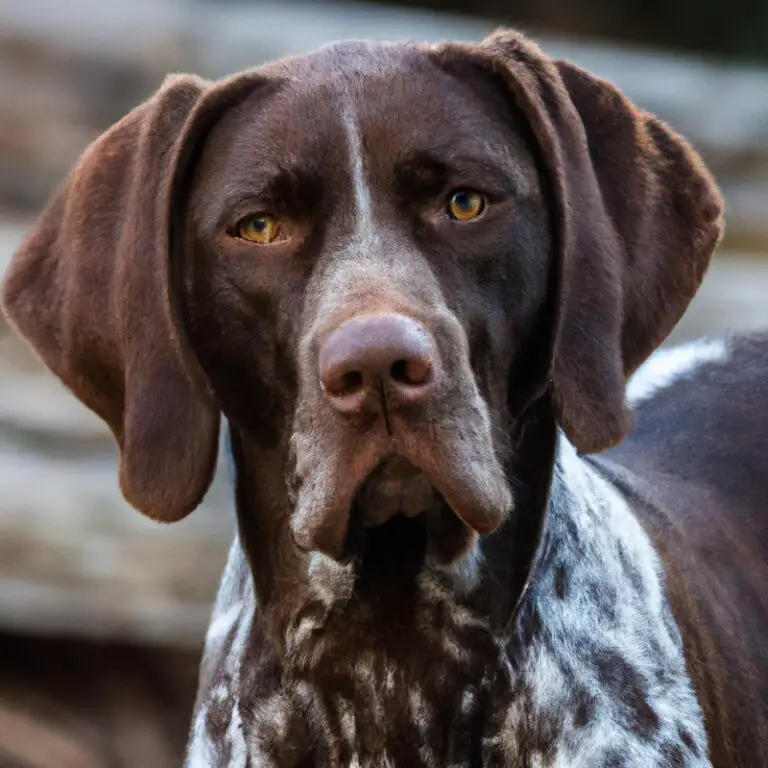How Do I Introduce My German Shorthaired Pointer To a New Home?
Important Findings:
- Gradually introduce your German Shorthaired Pointer to their new home to help them feel comfortable.
- Establish a routine and provide consistent training to help your dog adjust to their new environment.
- Socialize your German Shorthaired Pointer with other pets and people to aid in their integration.
- Patience, positive reinforcement, and plenty of love will go a long way in helping your German Shorthaired Pointer settle into their new home.
So, you’ve brought home a German Shorthaired Pointer, huh? Welcome to the wonderfully adventurous world of dog ownership! But now comes the big question: How do you introduce your new furry friend to their new home?
Well, fear not, my fellow dog enthusiast, because I’ve got you covered! As an experienced German Shorthaired Pointer owner myself, I’ve been through it all – the cute chaos, the initial nerves, and the priceless moments of joy.
In this article, I’ll walk you through the essential steps to ensure a smooth transition for your new buddy, from creating a safe space to building a strong bond. Let’s make this journey a tail-wagging success!
| Steps | Description |
|---|---|
| 1 | Prepare the new home: create a safe and comfortable space for your German Shorthaired Pointer, including bedding, toys, and water. |
| 2 | Start with a quiet and calm introduction: allow your dog to explore the new home at their own pace, while providing reassurance and positive reinforcement. |
| 3 | Establish a routine: set consistent meal times, potty breaks, and exercise schedules to help your dog adjust to the new home. |
| 4 | Socialize with family members: introduce your German Shorthaired Pointer to each family member gradually, ensuring positive interactions and avoiding overwhelming them. |
| 5 | Introduce to other pets: if you have other pets, introduce them to your new German Shorthaired Pointer slowly and cautiously, using controlled, supervised sessions. |
| 6 | Explore the neighborhood: gradually introduce your dog to the sights, sounds, and smells of the neighborhood, starting with short walks and gradually increasing the duration. |
| 7 | Puppy-proof the home: ensure the new home is safe for your German Shorthaired Pointer by securing potential hazards and blocking off restricted areas. |
| 8 | Patience and positive reinforcement: be patient with your German Shorthaired Pointer as they adjust to their new home, and reward desired behaviors with treats, praise, and affection. |
Preparing for the Arrival of Your German Shorthaired Pointer
Creating a Safe and Welcoming Environment
Creating a safe and welcoming environment for your new German Shorthaired Pointer is key to helping them adjust to their new home. First and foremost, make sure your home is puppy-proofed.
Remove any potential hazards such as toxic plants, electrical cords, or small objects that they could swallow.
Provide a designated space for your Pointer that includes a comfortable bed, water bowl, and toys. This will give them a sense of security and help them settle in.
Establish a consistent routine for feeding, exercise, and bathroom breaks.
Dogs thrive on structure, so having a predictable schedule will help them feel secure and confident in their new surroundings. Introduce your Pointer to family members and other pets gradually, in a calm and controlled manner.
Allow them to acclimate to each other’s scents before allowing direct contact.
Supervise all interactions to ensure everyone feels safe and comfortable. Lastly, shower your Pointer with love, patience, and positive reinforcement.
This will help build a strong bond between you and create a harmonious environment for your new furry friend.
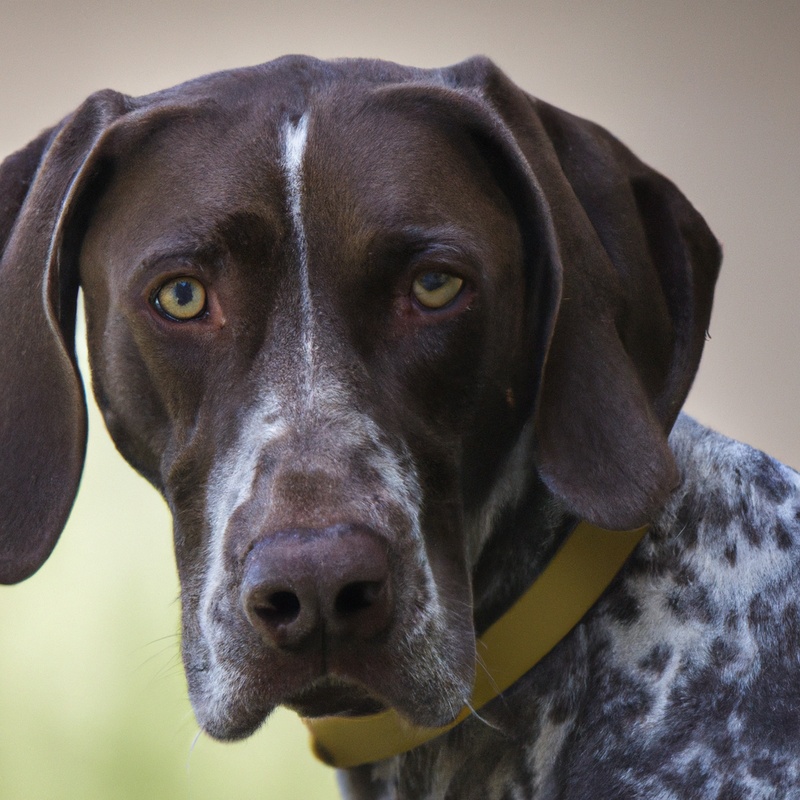
Gathering Essential Supplies
Now that you’re getting ready to welcome your new German Shorthaired Pointer into your home, it’s time to make sure you have all the essential supplies. Here’s a list to help you gather everything you need:
- Food and Water Bowls: Make sure to choose bowls that are the right size for your dog’s breed and age. Stainless steel bowls are often recommended, as they are durable and easy to clean.
- High-Quality Dog Food: Speak to your vet and research the best type of dog food for your German Shorthaired Pointer. Look for options that offer a balanced diet and meet their specific nutritional needs.
- Comfortable Bed: Dogs need a cozy place to rest and sleep, so invest in a comfortable dog bed. Consider the size of your dog and choose a bed that provides enough support.
- Collar and Leash: You’ll need a collar and leash for walks and outings. Look for a collar that fits properly and is adjustable. A sturdy leash will give you control while keeping your dog safe.
- ID Tags: Attach identification tags to your dog’s collar with your contact information. This will help ensure their safe return if they ever get lost.
- Crate or Kennel: A crate or kennel can serve as a safe and secure space for your German Shorthaired Pointer. Make sure it’s the right size for your dog and consider including a comfortable bed inside.
- Toys and Chews: Keep your new companion entertained with a variety of toys and chews. Choose options that are safe for their size and age, and consider different textures and types to keep them engaged.
- Grooming Supplies: German Shorthaired Pointers have short coats but still require regular grooming. Invest in a brush, nail clippers, and dog-friendly shampoo to keep their coat and nails healthy.
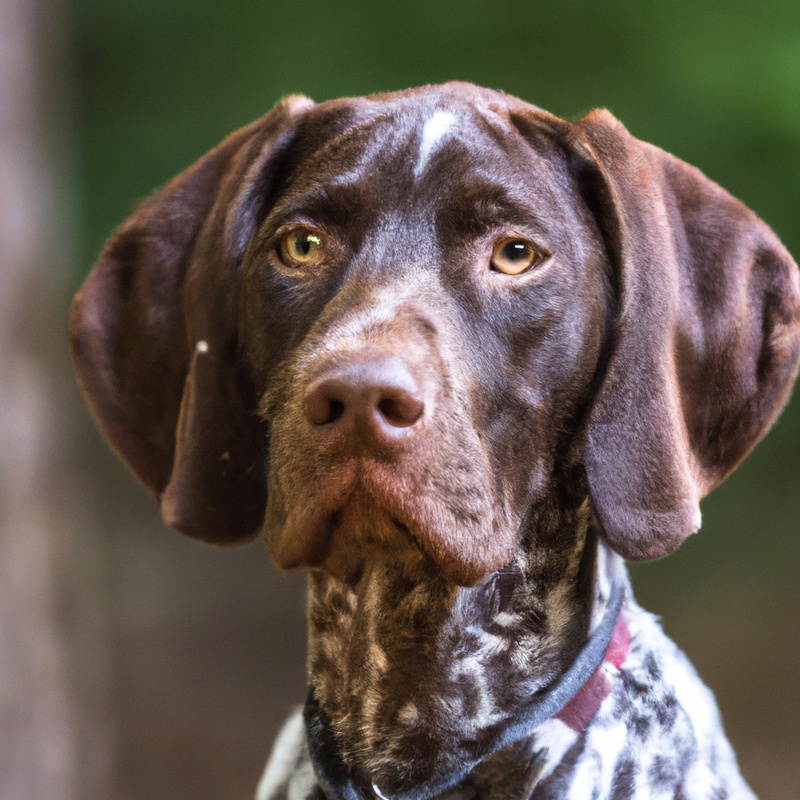
Familiarizing Yourself with the Breed
Familiarizing Yourself with the Breed First and foremost, take the time to learn about the German Shorthaired Pointer breed. This will help you understand their specific needs, temperament, and characteristics.
Did you know that they are known for their energy and love for outdoor activities?
It’s important to know that German Shorthaired Pointers require regular exercise to keep them happy and healthy. This means they need plenty of time to run, play, and explore.
They are intelligent dogs, so mental stimulation is also important.
Puzzle toys and training exercises can help keep their minds sharp. Additionally, these dogs are social creatures and thrive on human companionship.
They enjoy being part of the family and may become unhappy if left alone for long periods.
Another key aspect of this breed is their grooming needs. German Shorthaired Pointers have short, thick coats that require regular brushing to keep them clean and free of loose hair.
They are relatively low maintenance in terms of grooming, but it’s still important to keep their ears clean and nails trimmed.
By familiarizing yourself with the German Shorthaired Pointer breed, you’ll be better equipped to provide them with the love, care, and attention they need.
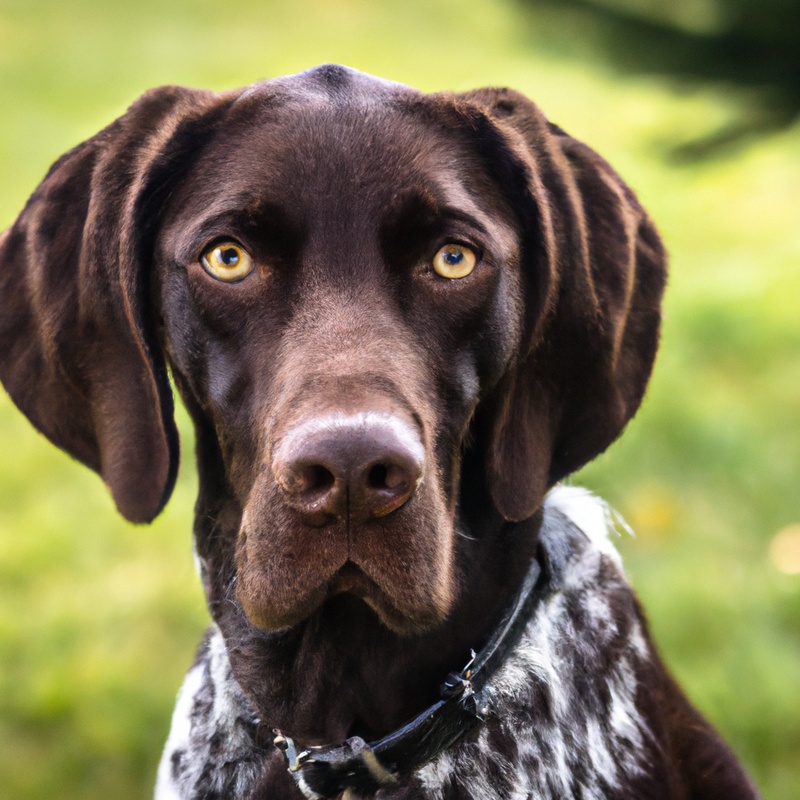
Establishing a Routine
First and foremost, establishing a routine is key when introducing a German Shorthaired Pointer to a new home. Dogs thrive on structure and predictability, so creating a consistent daily schedule is crucial for their well-being.
Here are a few tips for establishing a routine:
- Set regular feeding times: Feed your German Shorthaired Pointer at the same times each day. This helps them anticipate when they will eat and prevents any hunger-related behavior issues.
- Designate potty breaks: Take your dog outside at regular intervals throughout the day to avoid accidents indoors. Be patient and consistent with potty training, providing plenty of positive reinforcement.
- Exercise regularly: German Shorthaired Pointers are energetic dogs that require ample exercise. Incorporate daily walks, play sessions, and mental stimulation activities into your routine to keep them physically and mentally satisfied.
- Allocate quiet time: Provide a calm and quiet space for your dog to relax and rest. This allows them to recharge and reduces stress.
Introducing Your German Shorthaired Pointer to the New Home
Gradual Introduction to the New Space
First and foremost, it’s important to introduce your German Shorthaired Pointer to their new home gradually. Rushing the process can be overwhelming for them.
Start by bringing them into one room at a time, allowing them to explore and get comfortable.
Make sure the space is safe and secure, removing any potential hazards. Gradually expand their access to other areas of the house, giving them time to adjust and familiarize themselves with their surroundings.
Patience is key during this gradual introduction, ensuring a smooth transition for your furry friend.
Introducing your Pointer to Family Members and Pets
When it comes to introducing your German Shorthaired Pointer to your family members and other pets, there are a few things to keep in mind. First and foremost, take it slow and allow everyone to adjust at their own pace.
Allow your pup to meet each family member and pet individually in a neutral environment, such as a park or backyard, where they can sniff and get acquainted.
Keep initial interactions short and positive, rewarding good behavior with treats and praise. Supervise all interactions closely and be patient as they get to know each other.
Settling in: Patience and Guidance
When it comes to settling in your new German Shorthaired Pointer to your home, patience and guidance are key. First and foremost, remember that your dog may feel anxious or overwhelmed in their new environment.
Give them time to adjust and be patient with their behavior.
Provide plenty of guidance and establish a routine from day one. Show them around the house, introduce them to their designated areas, and slowly introduce them to family members and other pets.
Use positive reinforcement and reward them for good behavior.
Be there for your dog and give them the attention they need. Spend quality time with them, play games, and go on walks together.
This will help them feel secure and build a strong bond with you.
Ensuring Proper Socialization
Proper socialization is essential for your German Shorthaired Pointer to adapt well to their new home. One important thing to keep in mind is to introduce them to different environments, people, and other animals gradually.
It’s important for them to have positive experiences and interactions to build their confidence and prevent fear or aggression.
Take your dog on regular walks, visits to parks, and introduce them to friendly dogs and people. Expose them to various sounds and experiences to help them become well-adjusted and happy in their new environment.
Building a Bond with Your German Shorthaired Pointer
Quality Time and Attention
Quality time and attention are essential for building a strong bond with your German Shorthaired Pointer. First and foremost, spend dedicated one-on-one time with your dog every day.
Whether it’s playing fetch, going for a walk, or just cuddling on the couch, this focused time together will help you both connect and form a deeper relationship.
Make sure to give your German Shorthaired Pointer plenty of attention throughout the day. This includes regular petting, praise, and positive reinforcement.
Dogs thrive on attention and will feel more secure and loved when they receive it consistently.
Additionally, incorporate interactive toys and games into your dog’s routine. These activities not only provide mental stimulation but also create opportunities for bonding.
Playing interactive games like hide and seek or teaching your dog new tricks will strengthen your relationship and keep your German Shorthaired Pointer entertained.
Positive Reinforcement Training
Positive reinforcement training is key when it comes to teaching your German Shorthaired Pointer. By using this method, you’ll be able to build a strong bond with your furry friend and ensure they learn in a positive and effective way.
First and foremost, positive reinforcement training involves rewarding your dog for good behavior.
This can be done through treats, praise, or even playtime. When your dog behaves in the desired manner, such as following a command or exhibiting good manners, provide immediate positive reinforcement.
Another important aspect of positive reinforcement training is being consistent with your rewards.
Make sure to reward your dog every time they exhibit the desired behavior. Consistency will help them understand what is expected of them and encourage them to continue behaving in that manner.
In addition, it’s important to be patient and understanding during the training process.
Dogs learn at their own pace, so it’s important to give them time to understand and respond to the commands. Using positive reinforcement consistently will help them learn faster and strengthen the bond between you.
Remember to always use positive reinforcement training techniques and avoid punishment or negative reinforcement.
This will create a positive and happy training environment for your German Shorthaired Pointer, making them more eager to learn and please you.
Incorporating Exercise and Mental Stimulation
Incorporating exercise and mental stimulation is key when bringing your German Shorthaired Pointer into a new home. First and foremost, make sure to provide plenty of physical exercise for your pup.
This breed is known for their high energy levels, so daily walks, runs, or play sessions are essential.
Additionally, engaging their mind is just as important. Consider puzzle toys, obedience training, or even agility courses to keep them mentally stimulated.
By providing both physical and mental outlets, you’ll create a happy and well-balanced environment for your German Shorthaired Pointer.
Understanding Your Pointer’s Needs
Understanding Your Pointer’s Needs is essential for creating a happy and fulfilling relationship with your German Shorthaired Pointer. First and foremost, these dogs are highly energetic and require plenty of exercise to stay physically and mentally stimulated.
Going for long walks, playing fetch, or engaging in agility training are all great ways to meet their exercise needs.
Another important aspect is socialization. German Shorthaired Pointers are social creatures and enjoy being around people and other animals.
By introducing them to different environments, people, and animals early on, you can help them develop into well-rounded and friendly dogs.
Furthermore, mental stimulation is vital for these intelligent dogs. They thrive on tasks that challenge their minds, such as puzzle toys, training sessions, or scent work.
This not only keeps them entertained but also prevents them from becoming bored and engaging in destructive behaviors.
Lastly, German Shorthaired Pointers are known for their strong hunting instincts. It’s important to provide them with opportunities to use their keen sense of smell and natural hunting abilities.
Activities like hide-and-seek with treats or participating in tracking or scent work can help satisfy this instinct in a safe and controlled manner.
Understanding and catering to these needs will not only ensure the well-being of your German Shorthaired Pointer but also foster a strong bond between you and your furry companion.
Resolving Challenges and Common Issues
Separation Anxiety: Easing the Transition
Separation anxiety can be a common issue when introducing a German Shorthaired Pointer to a new home. The key is to ease the transition and make your new pup feel comfortable and secure.
Here are a few tips to help you address separation anxiety:
- Start with short departures: Begin by leaving your pup alone for short periods of time and gradually increase the duration. This helps them get used to your absence and builds their confidence.
- Create a cozy space: Set up a comfortable area for your pup with their bed, toys, and familiar scents. This will provide them with a safe haven when you’re not around.
- Establish a routine: Dogs thrive on routine, so try to establish a consistent daily schedule for feeding, exercise, and playtime. This helps them feel more secure and reduces anxiety.
- Use positive reinforcement: Reward your pup with treats and praise when they display calm behavior during departures and arrivals. This will reinforce positive associations with your comings and goings.
- Provide mental stimulation: Engage your pup with interactive toys, puzzles, and games to keep their minds occupied while you’re away. This can help distract them from their anxiety.
Housebreaking and Crate Training
Housebreaking and crate training are important aspects of introducing your German Shorthaired Pointer to their new home. First and foremost, establish a routine for taking your dog outside to eliminate.
Take them out first thing in the morning, after meals, and before bedtime.
Remember, consistency is key. Crate training can be very helpful in housebreaking your dog.
Make sure the crate is the right size for them – not too big or too small.
Dogs usually won’t soil their sleeping area, so using a crate can teach them to hold it until they’re taken outside. It’s important to never use the crate as a form of punishment.
Instead, make it a safe and comfortable space for your dog.
Gradually increase the time they spend in the crate so they get used to it. Using positive reinforcement, like treats and praise, can also encourage them to view the crate as a positive place.
Chewing and Behavior Management
When bringing a German Shorthaired Pointer into your home, it’s important to address chewing and manage their behavior from the start. First and foremost, provide your pup with plenty of appropriate chew toys to redirect their chewing instincts.
Make sure these toys are durable and safe for them to chew on.
Consistency is key in behavior management. Set clear boundaries and rules for your pup, and stick to them.
When they exhibit unwanted chewing behavior, redirect their attention to an appropriate toy and praise them when they chew on it instead.
It’s also crucial to keep your pup mentally and physically stimulated to prevent boredom and destructive chewing. Regular exercise, playtime, and puzzles or treat-dispensing toys can help keep them occupied and satisfied.
If you find that despite your efforts, your pup continues to exhibit destructive chewing behavior, consider consulting a professional dog trainer or behaviorist for guidance.
They can provide specialized advice and strategies to address the issue effectively.
Addressing Aggression or Fearfulness
Addressing aggression or fearfulness in your German Shorthaired Pointer requires patience, consistency, and positive reinforcement. First and foremost, it’s important to understand the underlying cause behind their aggressive or fearful behavior.
Is it due to a traumatic experience, lack of socialization, or a medical issue?
Once you’ve identified the cause, you can begin addressing it. A great approach is to gradually expose your GSP to the triggering stimuli in a controlled and safe manner.
Start at a distance where they feel comfortable and reward them for calm behavior.
Slowly decrease the distance over time, allowing them to build confidence. Consistency is key, so be sure to practice regularly and avoid exposing them to overwhelming situations.
Positive reinforcement training can also be highly effective.
Reward good behavior with treats, praise, and playtime. This helps your GSP associate positive experiences with the previously fear-inducing stimuli.
If the aggression or fearfulness persists, it’s best to seek professional help from a certified dog trainer or behaviorist who specializes in working with reactive dogs.
They can provide tailored guidance and techniques to address your GSP’s specific needs.
Nurturing a Happy and Healthy German Shorthaired Pointer
Ensuring a Nutritious Diet
First and foremost, providing your German Shorthaired Pointer with a nutritious diet is essential for their overall health and well-being. Here are a few tips to ensure they are getting the right nutrients:
- Choose high-quality dog food: Opt for premium dog food that is specifically formulated for active breeds like German Shorthaired Pointers. Look for options that contain real meat, whole grains, and essential vitamins and minerals.
- Balance their meals: Provide a balanced diet that includes a good mix of proteins, carbohydrates, and fats. Consult with your veterinarian to determine the appropriate portion sizes based on your dog’s age, weight, and activity level.
- Incorporate fruits and veggies: Supplement their diet with small amounts of fruits and vegetables. These can provide additional vitamins, minerals, and fiber. However, avoid feeding them food that is toxic to dogs, such as grapes, onions, and chocolate.
- Offer fresh water: Ensure that your German Shorthaired Pointer has access to fresh, clean water at all times. Hydration is crucial for their overall health and helps to maintain proper digestion.
- Avoid overfeeding: German Shorthaired Pointers have a tendency to overeat. Be mindful of portion sizes and avoid free-feeding, instead, stick to a regular feeding schedule.
Regular Vet Checkups and Vaccinations
Regular vet checkups and vaccinations are essential for the health and well-being of your German Shorthaired Pointer. First and foremost, make sure to schedule regular checkups with your veterinarian.
These checkups allow the vet to monitor your dog’s overall health, detect any potential issues early on, and provide appropriate preventive care.
Vaccinations are another crucial aspect of keeping your German Shorthaired Pointer healthy. Vaccines help protect your dog from various diseases, including rabies, distemper, parvovirus, and more.
Your vet will recommend a vaccination schedule based on your dog’s age, lifestyle, and the prevailing diseases in your area.
During the checkups, your vet will also address any concerns you may have, perform necessary tests, and provide guidance on maintaining your dog’s optimal health. Regular vet checkups and vaccinations are key to ensuring your German Shorthaired Pointer lives a happy and healthy life.
So, be proactive and prioritize their well-being by scheduling those important visits.
Grooming and Hygiene
Grooming and hygiene are important aspects of keeping your German Shorthaired Pointer happy and healthy. First and foremost, regular brushing is essential to keep their coat looking good and to prevent matting.
You should also keep their nails trimmed to a comfortable length to ensure they can walk and run without any discomfort.
In addition to brushing and nail care, it’s important to clean your dog’s ears on a regular basis. Use a gentle ear cleaner and cotton balls to remove any wax or dirt buildup.
This helps prevent ear infections and keeps their ears clean and healthy.
Another aspect of grooming and hygiene is dental care. Brushing your German Shorthaired Pointer’s teeth regularly helps prevent dental issues, such as tartar buildup and gum disease.
You can use dog-specific toothpaste and a soft toothbrush to gently clean their teeth.
Lastly, don’t forget about bathing your dog. While German Shorthaired Pointers have a natural “doggy” smell, regular baths help keep their coat clean and their skin healthy.
Use a dog-specific shampoo and make sure to rinse thoroughly to remove all soap residue.
By incorporating these grooming and hygiene practices into your routine, you’ll ensure that your German Shorthaired Pointer stays clean, comfortable, and in optimal health.
Mental and Physical Health
When it comes to the mental and physical health of your German Shorthaired Pointer, there are a few key things to keep in mind. First and foremost, exercise is crucial for their overall well-being.
These dogs are energetic and need plenty of physical activity to burn off their energy.
Daily walks, runs, or playtime in a securely fenced yard are essential. In addition to physical exercise, mental stimulation is also important.
German Shorthaired Pointers are intelligent and require mental challenges to stay happy and engaged.
Consider incorporating puzzle toys, obedience training, or interactive games to keep their minds sharp and prevent boredom. Proper nutrition is another crucial aspect of their health.
Ensure that you provide your pup with a balanced diet that meets their nutritional needs.
Consult with your veterinarian to determine the best food options for your German Shorthaired Pointer. Regular veterinary check-ups are essential to monitor their overall health and address any potential issues early on.
Stay on top of vaccinations, flea and tick prevention, and routine dental care.
Your vet can also provide guidance on how to maintain a healthy weight and address any specific health concerns for this breed. By taking care of your German Shorthaired Pointer’s mental and physical health, you are setting them up for a happy and thriving life.
Remember to provide ample exercise, mental stimulation, balanced nutrition, and regular veterinary care.
Troubleshooting and Seeking Professional Help
Recognizing Signs of Distress
Recognizing signs of distress in your German Shorthaired Pointer is crucial for their well-being. First and foremost, pay attention to changes in their behavior.
Are they acting more withdrawn or aggressive?
Are they excessively panting or drooling? These could be signs of stress or anxiety.
Additionally, watch for physical signs like excessive shedding or a change in appetite.
If you notice any of these signs, it’s important to address them promptly to ensure your dog’s happiness and comfort.
Effective Communication and Consistency
Effective communication and consistency are key when introducing your German Shorthaired Pointer to a new home. First and foremost, make sure to communicate with all family members or roommates about the rules and expectations for the dog.
This ensures everyone is on the same page and provides a consistent environment for the dog.
Next, establish a consistent routine for feeding, exercise, and bathroom breaks. Dogs thrive on routine and knowing what to expect.
This helps them feel more secure and comfortable in their new surroundings.
In addition, use clear and consistent commands when training your German Shorthaired Pointer. This helps them understand what you want them to do and reinforces their training.
Remember to also give verbal praise and positive reinforcement when your dog behaves well.
This encourages good behavior and strengthens the bond between you and your new furry friend. By effectively communicating and maintaining consistency, you create a harmonious and comfortable environment for your German Shorthaired Pointer as they adjust to their new home.
Consulting a Professional Trainer or Behaviorist
If you’re having trouble introducing your German Shorthaired Pointer to their new home, it might be time to call in a professional trainer or behaviorist. These experts specialize in understanding dog behavior and can provide valuable guidance and support.
They can help you create a personalized plan to ease your dog’s transition and address any specific challenges you’re facing.
By consulting a professional, you can gain insights and strategies to ensure a smooth and positive adjustment for your furry friend. Don’t hesitate to reach out for help when needed!
Patience and Persistence
When introducing your German Shorthaired Pointer to a new home, two important things to remember are patience and persistence. It might take some time for your dog to adjust to their new surroundings, so be patient with them.
Allow them to explore at their own pace and give them time to get comfortable.
Additionally, be persistent in your training and establishing routines. Stick to a consistent schedule and keep working on building their trust and obedience.
With patience and persistence, your German Shorthaired Pointer will soon settle into their new home.
Final Verdict
Introducing your German Shorthaired Pointer to a new home requires patience, preparation, and understanding. By creating a safe and welcoming environment, familiarizing yourself with the breed, and establishing a routine, you can ensure a smooth transition for your furry friend.
Gradual introductions, positive reinforcement training, and quality time spent together will help in building a strong bond with your Pointer.
It is important to address challenges promptly, prioritize your Pointer’s health and well-being, and seek professional help when needed. With dedication and consistency, you can nurture a happy and harmonious relationship with your German Shorthaired Pointer.

